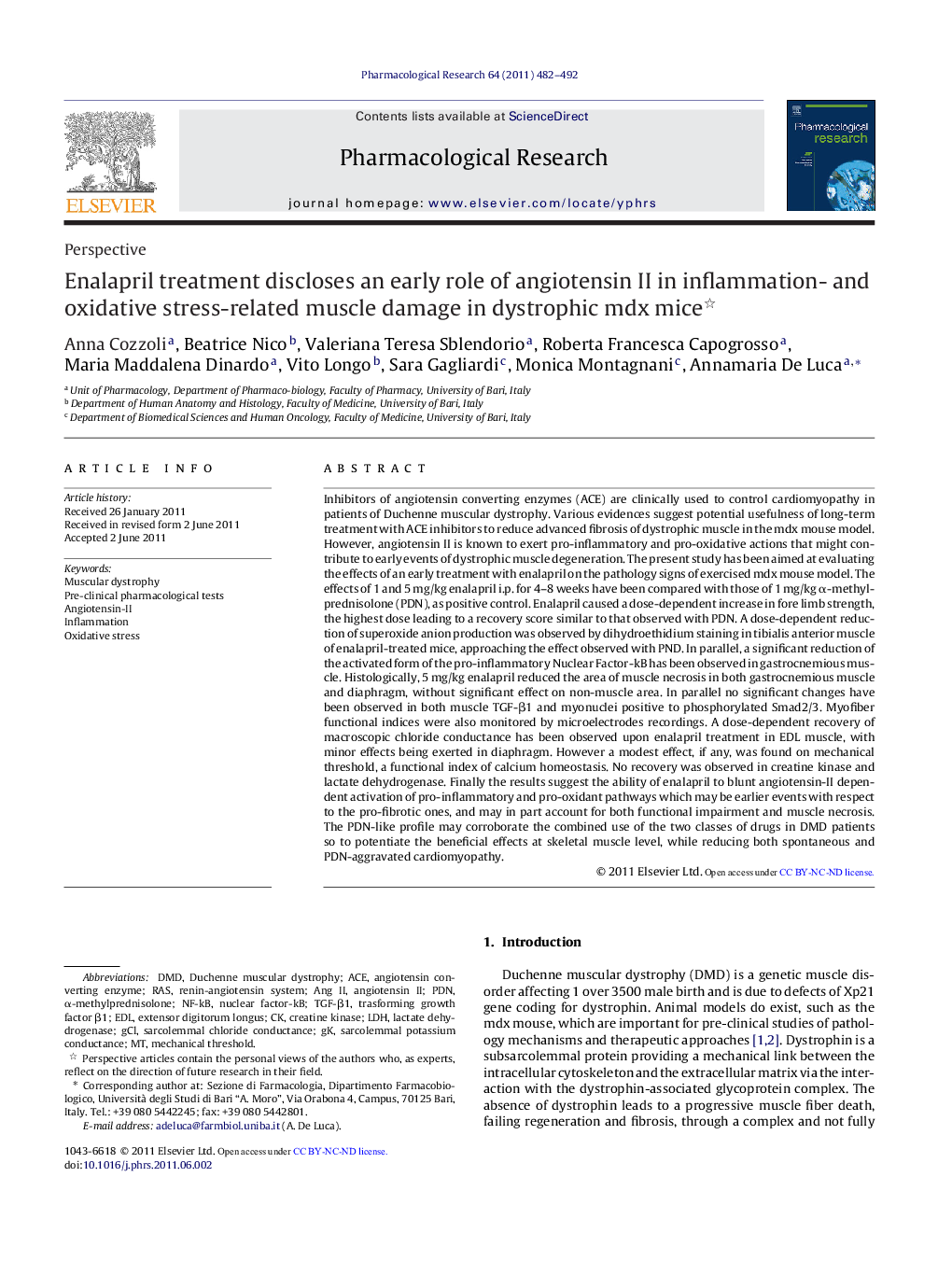| Article ID | Journal | Published Year | Pages | File Type |
|---|---|---|---|---|
| 5843861 | Pharmacological Research | 2011 | 11 Pages |
Inhibitors of angiotensin converting enzymes (ACE) are clinically used to control cardiomyopathy in patients of Duchenne muscular dystrophy. Various evidences suggest potential usefulness of long-term treatment with ACE inhibitors to reduce advanced fibrosis of dystrophic muscle in the mdx mouse model. However, angiotensin II is known to exert pro-inflammatory and pro-oxidative actions that might contribute to early events of dystrophic muscle degeneration. The present study has been aimed at evaluating the effects of an early treatment with enalapril on the pathology signs of exercised mdx mouse model. The effects of 1 and 5 mg/kg enalapril i.p. for 4-8 weeks have been compared with those of 1 mg/kg α-methyl-prednisolone (PDN), as positive control. Enalapril caused a dose-dependent increase in fore limb strength, the highest dose leading to a recovery score similar to that observed with PDN. A dose-dependent reduction of superoxide anion production was observed by dihydroethidium staining in tibialis anterior muscle of enalapril-treated mice, approaching the effect observed with PND. In parallel, a significant reduction of the activated form of the pro-inflammatory Nuclear Factor-kB has been observed in gastrocnemious muscle. Histologically, 5 mg/kg enalapril reduced the area of muscle necrosis in both gastrocnemious muscle and diaphragm, without significant effect on non-muscle area. In parallel no significant changes have been observed in both muscle TGF-β1 and myonuclei positive to phosphorylated Smad2/3. Myofiber functional indices were also monitored by microelectrodes recordings. A dose-dependent recovery of macroscopic chloride conductance has been observed upon enalapril treatment in EDL muscle, with minor effects being exerted in diaphragm. However a modest effect, if any, was found on mechanical threshold, a functional index of calcium homeostasis. No recovery was observed in creatine kinase and lactate dehydrogenase. Finally the results suggest the ability of enalapril to blunt angiotensin-II dependent activation of pro-inflammatory and pro-oxidant pathways which may be earlier events with respect to the pro-fibrotic ones, and may in part account for both functional impairment and muscle necrosis. The PDN-like profile may corroborate the combined use of the two classes of drugs in DMD patients so to potentiate the beneficial effects at skeletal muscle level, while reducing both spontaneous and PDN-aggravated cardiomyopathy.
Graphical abstractDownload high-res image (215KB)Download full-size imageHighlights⺠An early treatment with enalapril was performed in exercised mdx mice. ⺠In vivo, enalapril increased mouse fore limb strength dose-dependently. ⺠Ex vivo, enalapril reduced muscular markers of oxidative stress and inflammation. ⺠Results corroborate an early role of angiotensin II in muscular dystrophy. ⺠Pre-clinical evidences of therapeutic interest of ACE inhibitors for therapy of DMD.
